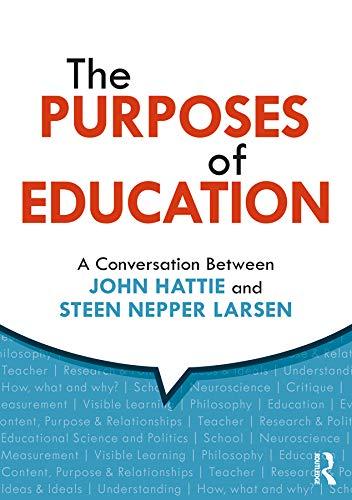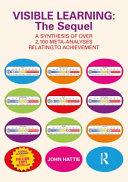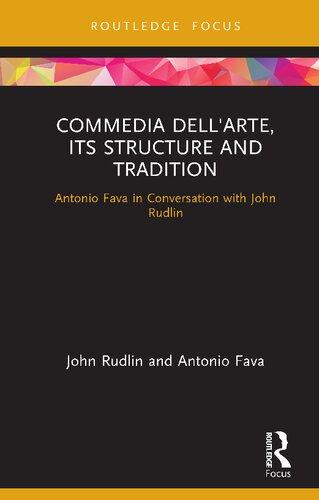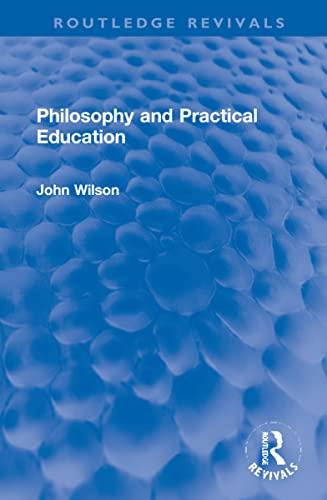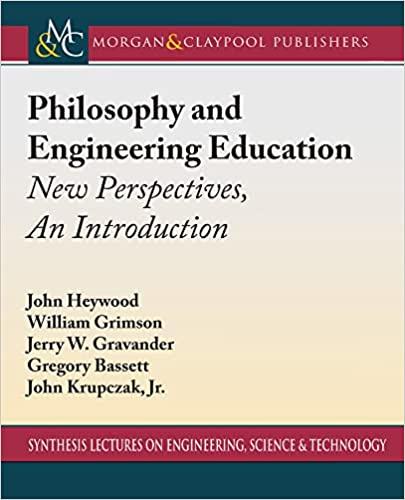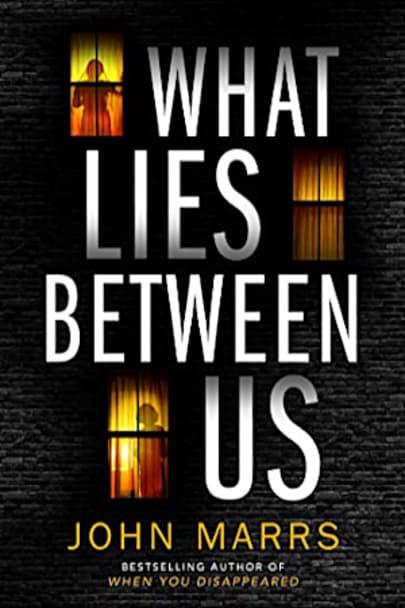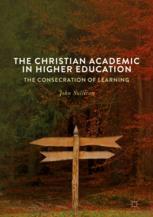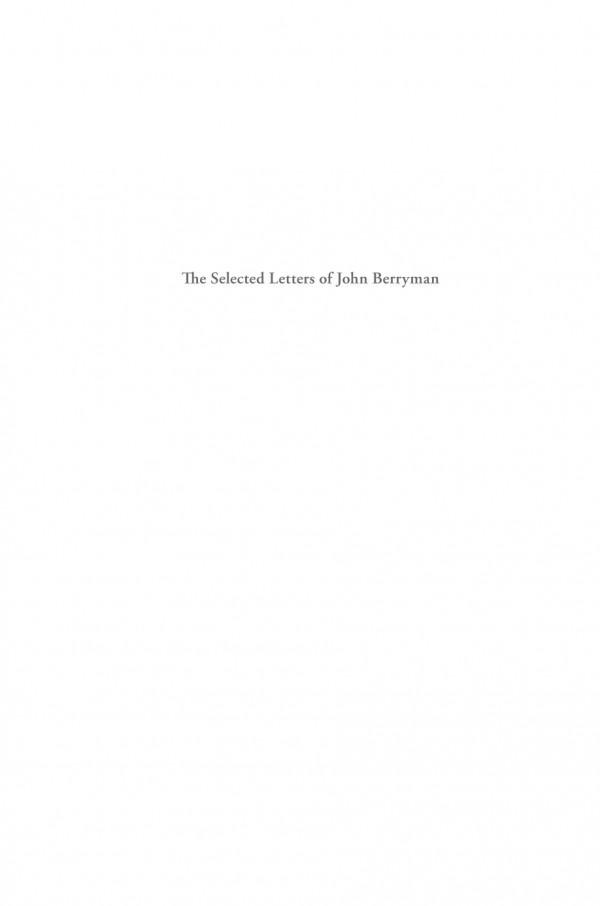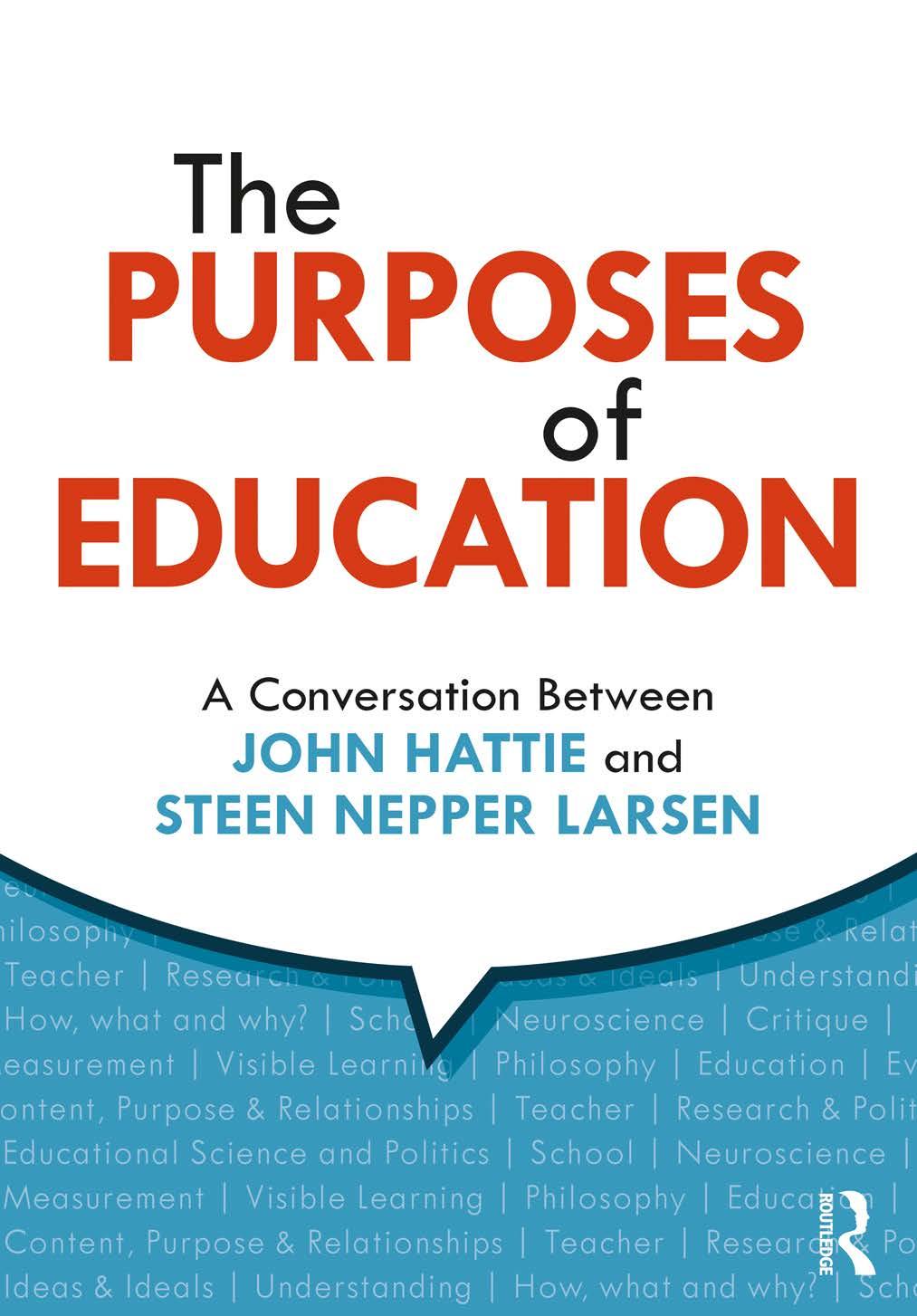Introduction
Having a conversation is the essence of respect, learning, and coming together. There is a long tradition of conversation in philosophy, with perhaps the high point being Plato’s writings of his many conversations. We only know Socrates through these conversations. When we listen to others, we can question our own beliefs and assumptions. When we demonstrate to others, we have heard what they have said, we have shown remarkable levels of respect. Then through conversation we can agree to agree, disagree, we can clarify and critique, we can grow to become more nuanced and sophisticated, and we can be led to more exciting thinking.
Since publishing Visible Learning there have been many discussions about this work. For many, it was a breath of fresh air; for others it upset core beliefs, it was too quantitative; and for others it was plain wrong. Over the subsequent years, there have been many systematic interventions in schools based on the Visible Learning story – one of the earliest and most comprehensive was in schools across Denmark. At the same time, the political agenda in Denmark was upsetting many of the traditional working conditions and using claims about Visible Learning to defend these changes (some wrong and some right attributions). No surprise there grew a backlash, a community of critics, and a turning up of the heat.
Academic ideas thrive in the primordial ooze of critique. Academic models need to be tested, falsified, and rebuilt; we grow via critique, and critique presumes that our understanding of the world is not perfect but can be improved. We can integrate and use many ideas from other disciplines, we can be diligent heirs to history, and can relate many ideas, but only if we are amenable to open conversations with experts in other domains. Unlike many public conversations, and certainly unlike many online fora, the aim is to critique the ideas, not the person.
Steen Nepper Larsen sent John Hattie a copy of his critique of Visible Learning and politely asked for comment. The reply was lengthy, and Steen called it “harsh,” which was far from the intention – an example of misunderstanding that conversations via email can engender. John claimed that he “fundamentally objected to the quality and nature of your argument. It is too much argument by innuendo,
by ignoring and misreading my corpus of work, not considering the actual impact of the work in the many schools near you. I would be happy to have a conversation through a rewriting and while I would respect your viewpoint at least a subsequent article would be a critique of what I said and not what you would want me to have said.” Whoops, perhaps it was harsh – but Steen rose to the occasion and invited a more in-depth conversation.
Steen replied that the fundamental questions he was addressing were: “What is the ontology of the learning effect? Can learning be grasped and understood as a visible phenomenon? What happens to schools and pupils when the VL evidence credo/‘package’ is being implemented by international, national, and local political and educational managers? The first two profound questions are philosophical of and in nature – the third deals foremost with Bildung concerns, and obvious threats to freethinking, and the disappearance of autonomous schools.”
Already there are two cultures evident – the world of a philosopher and the world of an educational psychologist and psychometrician. We had much to learn about each other’s heritage and language. Steen also sent a wonderful exemplar of a conversation between the musician Daniel Barenboim and professor of literature Edward Said (www.youtube.com/watch?v=HWQCy6_TU3A) and suggested we may grow each other’s views via such a conversation. Book versions of conversations are not uncommon in philosophy but are rarer in education. In Resonance Education, the sociologist Hartmut Rosa talks with the pedagogue Wolfgang Endres about the basic features of learning that are individualized and sustainable, and how the idea of ‘resonance’ can be applied to the areas of school and education (Rosa & Endres 2016). But such conversations do not happen via email, which soon can move to “I say, no, I said” with little interaction or clarification, and too often such exchanges harden positions with little listening. It can look harsh too quickly. Sherry Turkle has written superbly on the flight from conversation into the world of communication without eye contact, the reaching for the keyboard not noticing the nuances of facial movements and eye gazes, and how too often we are now alone together (Turkle 2017). We also note the powerful quote from Michael Foucault (1984): “Thought is not what inhabits a certain conduct and gives it its meaning; rather, it is what allows one to step back from this way of acting or reacting, to present it to oneself as an object of thought and question it as to its meaning, its conditions, its goals. Thought is freedom in relation to what one does, the motion by which one detaches oneself from it, establishes it as an object, and reflects on it as a problem.” So, Steen commented that he had “an idea brewing in his mind”: Why not come together for some weeks to converse?
He outlined some key ideas: Let’s talk about the purpose of education, there are many more than curious to come to know answers far beyond the Visible Learning paradigm and results – and most are now in this book. He wrote, “We could challenge and irritate one another and it is likely that our intellectual exchanges will force both of us to invent and ventilate self-critical and former unknown perspectives on education. We could talk about the purpose of education, why does mankind need education, the legacy of Bildung, autonomy in education, the
relation between research and politics, the concept of learning, the (in)visibility of learning, the role of education in society, the future of education, e-learning and alienation, and so much more.”
We comment about current issues, although note that time can change, governments and ministers change, and this may need to be considered.
Steen packed his eleven-speed bike (so much thinking happens on the bike), and flew to Melbourne, where we spent a few weeks in conversation from May to June 2018. We recorded, then transcribed these conversations, and then worked, reworked, had more discussions, reordered, explored, and created this book. It was a labor of much love as both profited from learning the other’s language, ways of thinking, and – we trust you will also see – different perspectives.
If there was ever an example of thinking aloud, this book aims to capture this phenomenon.
Let me introduce the conversationalists: Mr. Visible Learning, John Hattie (b.1950) meets Mr. Bildung, Steen Nepper Larsen (b.1958).

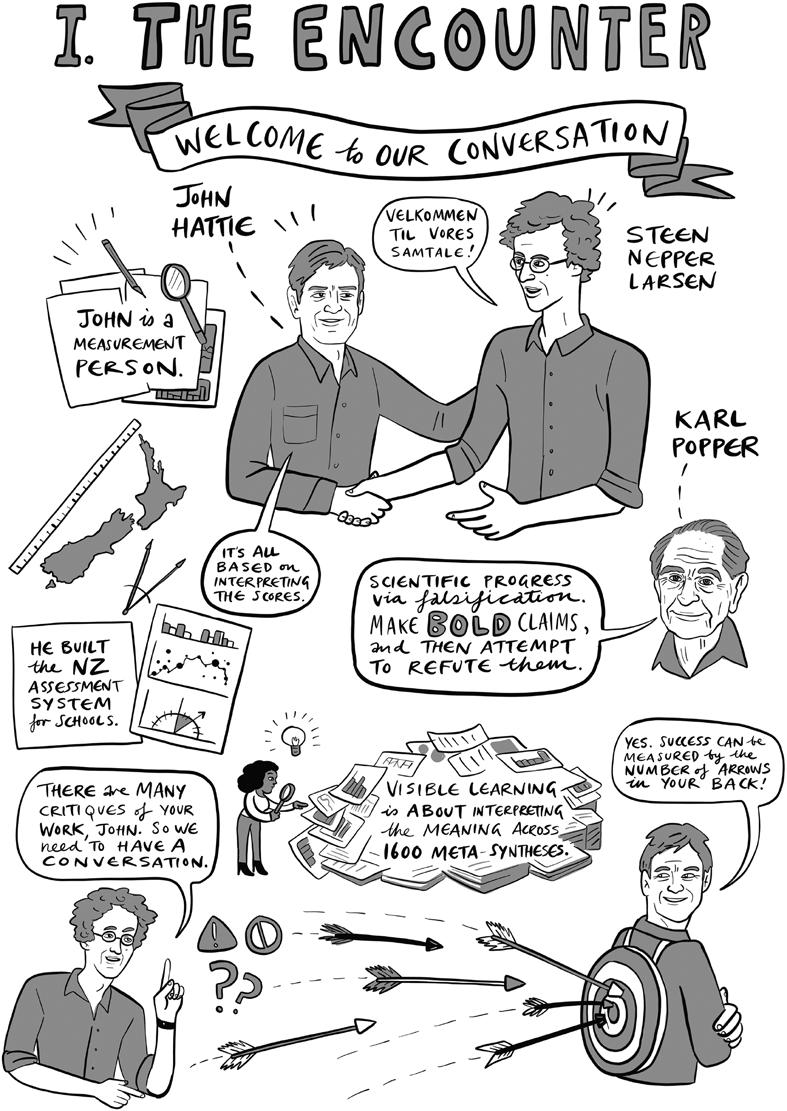
John: Welcome to Melbourne, Steen. You’ll discover, over the next two weeks, that I’m curious about most things. I know some things reasonably well, some things hardly at all. I do not claim, like you can, to be an expert in philosophy. And, as I think I’ve mentioned to you, I had the luxury, when I was a graduate student at the University of Otago, to sit in classes on the philosophy of science. We had a brand new professor of philosophy who was a philosophy of science expert. And he was this young guy from England, Alan Musgrave (Musgrave 1993), and he was a brilliant teacher and promoted a notion I have loved – theories should make novel predictions – so that in Visible Learning, the underlying explanation and theory should make predictions that were not used in the construction of the theory, but should follow from it. Many of us, including me, snuck into his classes. During that time, his mentor, the Austrian-born English philosopher Karl Popper, came on sabbatical to New Zealand. He was then in his 70s, but wow what a thinker – he was one of those rare academics who ‘thought aloud’. Have you ever heard Popper speak?
Steen: Only in radio programs, but of course I have read him.
John: The way he lectured, in his very thick, Viennese voice, he read every word. He never looked up once, and as he read it, we were spellbound. He had this thing at the time. He hated social science (and smokers), but he wouldn’t talk about it. “It’s not a science.”
Steen: I know.
John: And so I had to sit there, obviously, as a young 20-year-old social science graduate student, spellbound by this man. You can imagine, he had quite an impact.
He was working on his three worlds paper (Popper 1979). His messages about making bold claims and then attempting to refute them was impressed upon us and became important through my career. I have often cited his claim: “Bold ideas, unjustified anticipations, and speculative thought, are our only means for interpreting nature: our only organon, our only instrument, for grasping her.” This was, he argued, because bold ideas propose and predict much, and thus are more easily refutable. I made some “bold” predictions about the underlying story in Visible Learning – of course others can refute them, of course they are conjectures and tentative, of course they aim to explain a lot, make new predictions, and of course they are open to counter arguments, falsifiability, and I hope they lead to new ways of seeing the world and they lead to new research. I know there’s a lot of criticism of him and he’s almost forgotten in many ways now. I don’t know if that’s true, but many people see him as a figment of history.


Steen: It depends on where you go. But you are right, his 1953 lecture Conjectures and Refutations (Popper 2002/1953) is still a classic worth consulting if you want to reflect upon how to learn to ask critical questions to scientific theories and falsify their results.
Visible Learning – working out the story is the hard part, the data is the easy part
John: Yeah, but then, my background, as you know, I’m a statistician in measurement. I have a life in that world and, in fact, up to 2009, the whole Visible Learning has been a hobby. It’s been a thing I did in my spare time.
I did it all myself , it took me 20 years, but the data part is not difficult. Meta-analysis is a straightforward method, calculating effects is not hard, and overall this data side is easy. The data’s trivially easy. Working out the story is the hard part.
The 2009 book kind of worked (Hattie 2009). It got attention. The Visible Learning books sold half a million copies, so something went right. But it is the story that is most critical.
Steen: And it got translated in all kinds of languages.
John: Twenty-three to 24 languages. But it was my tenth book. What happened to the other nine?
I love this story. It may not be true, but I still like it. My first book on three-mode factor analysis is still in print, published in 1984, because they printed 500 copies and they haven’t sold them all yet.
Steen: They are probably valuable objects for collecting.
John: And so, the whole Visible Learning, it’s taken over in a way. I still work at the measurement area, but not as much now as Visible Learning has become more dominant.
In fact, I counted it up the other week. For 21 year s, I’ve been a dean or head of school in three universities, and deputy dean at another. As you know, that just takes the life out of you, but I loved it. In fact, I was deputy dean here last year for a year, after a 10-year break from these kinds of duties.
Steen: Okay, but your Visible Learning programs also transformed into a business program, I guess. You seem to have been all around the globe, and many different schools have adopted your way of looking at and evaluating things. But have you made and handled the data here in Australia?
John: Yes and no. What happened is that, when I went back to New Zealand in 1999 (I’m originally from there but left in 1974), they were in an interesting stage politically in that one political party said they wanted national testing like America has, like England has. The other party said, “No way.” The latter party won government.
And then they said, “Oh, my goodness. We haven’t a clue how we will now know what is going on in the schools.”
So, they put out a bid for a large amount of money to create a year five and year seven test in reading and writing, the usual nonsense. I was quite opposed to this. I think national testing’s a disaster.
We put in a non-compliant bid and we won, and so we built the New Zealand Assessment Scheme and I want to show it to you as it is quite a different way of thinking about assessment (Hattie 2006).
And what we’re most proud of, it’s voluntary. No school has to use it. Eighty percent of schools are using that assessment tool 17 years later. Very successful.
Steen: That’s very different from the European system.
John: Totally.
Steen: The OECD-invented PISA test system was launched in 2000. The idea was to compare and hopefully strengthen the pupils’ skills in different nations, and from the school year 2006 to 2007 Denmark has used a mandatory national test program.
John: The NZ system is not mandatory.
Steen: The PISA program was implemented via a so-called voluntary coordination program (see my colleague Krejsler et al. 2014). The different ministers of education and their staff gathered and coordinated their test programs. It thereby turned out to be more or less mandatory, and now they’re putting out the figures for all these countries and for every ‘stakeholder’ to read.
But are you basically critical against all these national competitive initiatives?
John: Yes, I am, and I want to show you the alternative, as it is key to claim it’s all about the alternatives.
So, we built this system. In about 2008 we had spent six years building it, and we were turning from building it and doing the research to becoming a maintenance-of-a-computer system. I didn’t want to do that.
So, I said to the government, “It’s time for me to hand it back to you people.” And they were very reluctant to take it in the early days. They didn’t have the expertise.
Steen: That was for Australia?
John: New Zealand. I said, “It’s just not appropriate that I’m running a computerbased company. It’s not my expertise. I don’t want to do it.” They took it back and did a good job from then on running it. And then I had a team and I was like, “What do you do with the team?”
Visible Learning had just come out and I said to them, “You’re very good at translating. That’s your skill. I don’t want to spend my life going out into schools. I’m not very good at it. I talk too much.” Schools like when I go and talk but, as I’m sure you know, nothing happens. Next day, forgotten. It was entertainment.
I said, “I don’t want to do that.”
So I said, “The task I want you to do is I want you to build the resources around Visible Learning and implement the ideas in schools.” And you can imagine we didn’t know a lot in those days as to how to do this. We did it for about six months to a year and it was becoming very successful in New Zealand.
6:34 p.m. one Saturday night, my dean emailed me without consultation, out of the blue, and said, “You have to close it. Close it by Monday. It’s too successful. You’re killing part of the university that’s supposed to deal with this, as the schools are all coming to you, not them.” And I was quite distraught, as you can imagine. I was a reasonably senior person in the place, but no consultation.
In retrospect, it was a very good decision because it allowed me to seek other, more compatible homes to upscale the translation into schools. So, various companies came to me and said, “We’ll buy these people.”
I went to this one place and I was on the board of this company and they said they’d take it. And I said, “I’ve got these ten people. They’re out of a job.” They took them.
Steen: Do you run this business beside your university job?
John: No, it is a completely separate affair, and it’s a commercial company. I said, “Look, here are the rules. I don’t want to be involved in the day-to-day delivery of this. It’s not my skill.” My terror, Steen, is – and I see some of my colleagues doing this – that I go out and do the same speeches on the research I did ten years ago. I don’t want to do that.
And so I said, “I will g ive you 30 days a year.” That’s it. They can have me present on those days. “I want you to build the resources.” But, on the other hand, I want quality control.
So, I get all the data from their implementation of the Visible Learning model in schools. There’s about 100, 200 of them around the world now. I worry about quality control. My argument is, if I don’t see an
impact on student learning, it’s not working. And three companies have gone because they couldn’t show that.
Last year the base of the commercial operations switched from New Zealand to a U.S.-based company (Corwin). Also, as I start retirement from the university, I’m seriously thinking of giving extra days because I’m quite happy with how they deliver Visible Learning across the world. I’ve been very happy with what they’ve done and, as I’m sure you know, it’s not easy as they had to undertake translation, adapt to the local circumstances, and hire local professional developers. There’s lots of things to learn from it, but it’s going extremely well as I see from the evidence on the students.
Like, I’ve seen all the data from the Skanderborg schools in your country. It’s pretty impressive.
Steen: So, are you working with the Danish professor Lars Qvortrup, the leader of National Centre for School Research at Aarhus University?
John: Yes.
Steen: In his old days, he was a Marxist, and then favored a system theoretical approach inspired by the German sociologist Niklas Luhmann, and now he is very much in favor of a so-called empirical turn in educational research, implying that he’s also relying on and producing educational statistics. That’s quite a big transformation.
John: I know, it’s crazy how we change over our careers. So, as you know, I’m a statistician and, yes, I never imagined that the Visible Learning book would ever be of interest. I wrote many versions of it. One version was over 500 pages. It was resplendent with graphs, numbers galore, it had every detail you could imagine, all the moderators, you name it.
My wife looked at it, she said, “Who would ever read this?” and I realized maybe two people would. So I threw it out and she created those dials to provide some flow. When she looked at the next version and she said, “Maybe ten will read it now, as there are still too many numbers.” So I made more revisions to make it less measurement-like while aiming to retain the evidence in a more interpretative style.
Janet is a professor of evaluation here at the University of Melbourne. Where are you based – at Aarhus or at Copenhagen?
Steen: In Copenhagen, where we, among other subjects, have Educational Psychology, Educational Philosophy, Educational Sociology, and Educational Anthropology. These four departments all possess substantial prefix-hyphen words (“Educational ”; in Danish: Pædagogisk .) in their names. It’s actually pretty interesting, but I actually belong to the
department Educational Sciences (in Danish: Uddannelsesvidenskab). Besides, I am a critic, for example, reviewing books for research magazines and the Danish newspaper Information. My wife, Ida Winther, is a professor of anthropology. When it comes to educational anthropology, it is both possible to study social processes in formal school institutions and informal learning and depict how students are building up their horizons for themselves. And how do they interact with one another in families that split up and how do different migration background themes “pop up.” Educational Anthropology is a very interesting program and it invites the students to do very broad and diverse investigations while they do field work.


Steen: “This is a world where massive amounts of data and applied mathematics replace every other tool that might be brought to bear. Out with every theory of human behavior, from linguistics to sociology. Forget taxonomy, ontology, and psychology. Who knows why people do what they do? The point is they do it, and we can track and measure it with unprecedented fidelity. With enough data, the numbers speak for themselves” (Anderson 2008).
So Chris Anderson (b.1961), the British-American writer, entrepreneur, and editor of Wired (Magazine) wrote in the famous article “The End of Theory: The Data Deluge Makes the Scientific Method Obsolete” way back in 2008, proclaiming that the Big Data revolution will change everything.
Before we start to discuss the effect problem in the field of education I wonder if you agree with Anderson when he claims the numbers speaks for themselves and states that we should get rid of science. But first of all, did you read this article?
John: Yes.
Steen: And is it correctly understood that you are simply against his idea that data are able to interpret themselves and contain the truth when they are piled up?
John: Yes, I am totally against this simplistic way of understanding.
Steen: I agree, and you seem to favor a kind of thinking – and theorizing –while doing research, but at the same time you tend to follow the principle that data must be deprived of context, subject, and the situation in which they’re collected to be “real” data.
John: No, it’s the opposite. They are empirical questions.
Steen: Empirical questions?
John: Yes, interpretations need to be tested, evaluated for context moderators, those kinds of things.
Steen: The strength of your approach is immediately impressive, that, even though a critical remark could be that there are tremendous differences between mathematics, poetry, and social science or sport or whatever, your approach is so strong that it can cover all dimensions in one program. It has apparently been designed not to be dependent on the substance of the learning matters.
John: Not completely – as it is an empirical question whether the substance of the learning matters. That’s the question that I’ve asked. Does the nature of the content mark a difference to any overall interpretations? I struggle to find any evidence that it does.
Steen: Or that it doesn’t.
John: No, that it does. My argument is that it’s an empirical question about if what works best in math is the same as what works in English. Is what works best for 5-year-olds the same as what works best with 15-yearolds? They are empirical questions, and, at this stage, I struggle to find any evidence that what works best differs by content domain (mathematics, English) or for age.
I want to be very careful here, as of course children are unique, the subject is unique. The conclusion is not that we treat each child the same irrespective of age, subject they are studying, etc. The conclusion is that the various strategies that combine to have the highest impact seem to work best for children regardless of their age, the content, etc.
The evidence, as I inter pret it, puts the onus back on those who argue for models of individual differences, as I struggle to see evidence for this model. Yes, we need to adapt the overall strategies depending on where the student is in the learning cycle, the nature and trajectory of their progress, and the challenge in the success criteria – but the same core principles outlined in Visible Learning apply to most students.
Steen: My idea is that, if you will defend more subject-oriented didactics, you will maintain that didactical ideas can be a kind of rival to the abstract claims of objectified evidence.
John: But here’s my question back to you. Why is it, then, that subject matter knowledge has an almost zero effect on student attainment? The degree to which teachers know their subject has almost a zero effect on student learning.
Steen: I don’t think that it covers the rich world of teacher–subject–pupil interactions to state that the teacher has a substantial knowledge of the subjects themselves.
John: But, the subjects themselves get translated via the teacher. So, why?
Steen: The subjects do not only – or primarily – get translated by the teacher. The student can, for example, read and interpret literature, or even write poems her- or himself. Teaching and education imply and contain
much more than a one-way and top-down communication traffic from the teacher to the pupil or student (Larsen 2015b). Teaching and interaction with freethinking and learning youngsters might open doors to magic art works and to the enigmatic structure of figures and equations in mathematics.
John: I see that, yes.
Steen: You seem to over-prioritize whether the teacher is prepared and making a clear statement of his learning ideals and goals. But I still think that this approach doesn’t really hit the nail on the head, while the subjects themselves have kind of a second-to-none influence, and it is very important that we dig deeper into the “logic” of subjects and practical deeds of pupils meeting and interpreting the subjects. Too much school life risks to disappear if you’re writing off the subjects.
John: Yes, it does. But here’s the view I take. The way I see the evidence and my interpretation of it is that the evidence so far shows that knowledge of the subject, the pedagogical content knowledge, whatever you want to call it, hardly matters, which is why we’ve spent the last 10 or 12 years trying to understand why it doesn’t matter – because it should matter.
Steen: But is it correctly understood that you in the first place had a kind of a preconception, that it should matter, and then you came to see from the figures that it didn’t matter?
John: Correct.
Steen: So, what is your interpretation?
John: We did about seven or eight studies trying to understand why subject knowledge had such low effects and they all failed. We looked at explanations such as teachers mainly needed to create great relations with students, teaching was teaching, and others. We then had to stand back and look at the way teachers normally interact in classrooms and there’s a lot of “tell and practice.” And “tell and practice” can be a good method. It’s worked for teachers for many decades. Another study that we have been doing is we take transcriptions of classes as teachers are teaching and we know what percentage of time teachers’ talk exceeds 80% of the talk time, on average. Again, teachers’ talking can work. Further, students above average prefer teachers to talk more – they have worked out the game – listen, repeat, and everyone seems happy!
Steen: These figures, interpretations, and theoretical clues might also depend on what kind of regime you are living in. For example, in Denmark a lot of experiments and alternative learning logics flourish. The pupils and students are giving presentations (mini-lectures), they work in autonomous project groups. They interview people and gather information from all kind of sources. . . .
John: Yes, we need to be careful. The studies we’ve done are based in England, Australia, and America.
Steen: In German you call it Frontalunterricht (teaching top-down, including teacher surveillance face to face).
John: The other thing is that, when you look at the nature of what students do, 90% plus of what they do is content, surface level learning, which is quite frankly indefensible.
Steen: Even though it shouldn’t be like that, you might be right, that half of what’s going on in the class is reproducing things that the pupils already know.
John: Yes, and that’s indefensible but that’s what happens. Now, if that’s the case, it makes perfect sense why a teacher only has to be one page ahead of the students. But, if you reduce the amount of teacher talk and increase the student talk, if you reduce the amount of teacher questions and increase the student questions, if you change the proportion of surface to surface and deep learning, then we have evidence that subject matter knowledge matters a lot.
Steen: So, what you’re actually describing through the use of your figures and statistics are more or less the failure of an old-fashioned system rather than propagating what it should be?
John: Correct. But more important, we are using a finding (the low effects of subject matter knowledge) and trying to find an explanation. We are not saying it does not matter, we are saying why is it that it seems not to matter, and on this question, I think we have some answers. It is like the low effect for class size. Many critics are furious that the effect is so small – but yes, it is a positive effect so reducing class size does relate to higher achievement effects – it is just that this effect is very small, particularly when the list of claims as to why it should be high are many, convincing, seductive, and ‘obvious’. So, why is the effect so small? My argument is that we need to understand why it has a small effect to improve it.
Steen: It also depends on the way you organize it. If you are working as a professor in a modern university, you spend much time supervising student written projects based on freely chosen subjects.
A really effective way to help the students develop their argument is that you read their papers thoroughly, profoundly, and closely in order to give them good advice and ideas of how to strengthen their knowledge of the subject and realize their ambitions. You sit there with the student and the paper between you two and have full mutual concentration on how to let this scriptural ‘third’ blossom (Larsen 2015c). This procedure is very different from having a kind of a one-way directive with an arrow: “I know what you should learn.”
John: One of my mistakes, which I’m happy to have made, was that league table of 1–250 influences ranging from teacher collective efficacy as #1 to boredom as #250. Too often, this ranking has been misinterpreted with some saying these top ranked are good, these lower ranked are bad. Some of the lower ranked can be critical but they’ve just been poorly implemented, not introduced in powerful ways, and we need to understand that. Subject matter knowledge is a perfect example of a lowranked influence that we must not dismiss as irrelevant or not important but need to deeply understand why the effect is so low – as then we can remediate the reasons and ensure it does matter.
And so, as you’ll see in the next publications I’m working on, there won’t be a league table.
Now, I do not regret developing the ranking – at least it got people’s attention – but the downside of it is that people stop there and a lot of the criticisms of my work are round the rankings. I would argue that quite a few of my critics have never read what I’ve written about them, they’ve just looked at the numbers, and that is it. For example, there is a recent blog noting the ranking, then claiming you cannot do this as there are moderators, there is overlap, the average for each is too crude – and clearly, they have never opened a page of the book – which is entirely focused on developing an underlying story based on the overlap, the moderators, and the variability within and across the influences. But that’s the price you pay for including simple overviews – they get taken out of context.
What is the ontology of an effect in education?
Steen: If we could turn to a profound question to get behind not only the misleading league table rating and the logic of causality and effect measurement in education, I wonder whether you think or do not think that there is something called the ontology of an effect? Does an effect,
for example, possess a value in, of, and for itself? Or is effect just a label or a name for gathering right and wrong answers when they are set in relation to progress or regress due to other measurement logics? But basically – and first: What is the ontology of an effect (Larsen 2015a, 2017b)?
John: As you know, the concept of effects and effect-sizes has been around a long time in statistics – they are simply standard deviation units, related to z-scores. It’s simple. And it was Gene Glass (Glass 1976) who used effect-size as a core notion in his development of meta-analysis. And in many ways, it’s an unfortunate word as effect can misleadingly imply causality. Now, when you unpack the multiple forms of effect-sizes it can be a correlate (e.g., per sonality to achievement); it can mean a factor that the teacher has control over (choice of teaching method); it can be an attribute of its student, which we may or may not have control over (sex of student).
Effect-size is kind of an amalgam of all those and, therefore, suffers because it has those multiple meanings. In my work I discuss each influence with respect to how we can control and change it or not, but sometimes this is missed by critics who only start and finish with the average effects.
The question is whether we can indeed combine effect-sizes based on various types of influences – the answer is yes, but the story of the moderators, of the different types, is critical.
Now, that’s the statistical notion of an effect-size.
Steen: My worry is that in politics and the educational planning scene or from a local government perspective, they want to have value for money, and tomorrow is too late. Then ‘effect’ becomes more or less equal to the right amount of correct answers to give the questions and progress in marks given, etc.
John: You’re right.
Steen: The political and managerial bureaucratic misunderstanding of and reductive definition of the effect is very important and risks leading the educational system astray.
John: It is because it’s an unfortunate word to those who have never moved beyond the ‘typical’ uses of the words effect and size
Steen: They think a higher mark is better than a lower mark, that three rights instead of two wrongs is better. And therefore effects get translated to hard ‘facts’ opening for and legitimizing easy conclusions.
John: I know. I agree with you and I wish there was a different word but, from a statistical point of view, it’s a very clear notion. It is an indication of the size of differences – typically between a measure prior to an intervention compared to after the intervention has been introduced, or between the average from an intervention compared to a control group. From an interpretation point of view, it’s got baggage – and like most baggage, what is inside is most fascinating.
Steen: So, when you have effect measurements on one side and you have something like status, power structures, multifactor scenes, and several correlations on the other side, how do you know then that the interpretation of the effect, for example, is the same seen from different horizons of interest?
An example could be that due to the amount of resources we have invested in certain education grants, we want to have an effect estimate of the long-term quality of the theses the students ‘produce’.
Another could be: What kind of meaning does it give to my life as a seven-year-old that I have to answer questions about my well-being or future life paths and expectations compared to other students my age in other schools? So, can we have something called effect measurement that is independent of the different contexts and vast amount of possible correlations that also might have an influence on the ‘result’ . . .?
John: You can’t have an effect-size independent of anything.
Steen: Okay. So, you have always to contextualize.
John: Totally. And then you also should be looking for the moderators. Does it have a different interpretation and different size of effect with 5-year-olds, 15-year-olds, boys, and girls? And that’s a key step in this whole business. And this is the problem with, as you’re saying, amalgamating it into one overall thing called an effect-size. But, yes, you do have to look at those things and that’s why, as said when we started this conversation, the numbers are the easy part. It’s the interpretation that’s the hard part – trying to get that interpretation of what those effect-sizes, and their multiple meanings are, and investigating the various moderators.
Steen: Can we talk about a three-step logic? First, you have some complex relations in schools. Then you ‘translate’ them to figures. And the third step leads you to the meta-level where you go from figures to fixated interpretation of figures. But the first part is not that easy, is it?
John: Of course it’s not.
Steen: Is it because you are destined and doomed to instrumentalize and to take a reductionist approach where you must translate very complex contextual, cultural, educational – and different ‘matters’ of socialization – into figures? This procedure does indeed not seem to be easy, maybe not even possible at all . . .
I wonder if you could also try to relate these remarks of mine to your vivid admiration for Popper’s principle of falsification. I understand how one can try to falsify research claiming a true relation between a theory and empirical data, but how do you falsify a story (an interpretation, a powerful horizon of semantics)?
John: No, it’s not easy to consider the various conditional influences. Some have argued it is indeed not possible to use this procedure, which is incorrect. You can, and I have done it; the correct question is more whether the interpretations are defensible.
Imagine taking two studies and comparing them. They come out with the same magnitude of effect, seems more like they are close replications, then this makes life easy. Now, imagine they have different magnitudes and are based on quite different samples. More attention to these details is critical. Multiply this by many hundreds if not thousands of articles and the requirement for detailed interpretation becomes even more critical. What I tried to do is build some common themes from over 800 meta-analyses (for the 2009 book) and now from over 1,600 meta-analyses. How credible, replicable, valid are the common themes –that it is the question.
I agree, a simple average, a simple story, a simple disregard for the nuances is indeed likely to be misleading. I use the average to set a ‘hinge’ – what are the common attributes that help explain those influences discussed compared to those beyond this hinge?
I made various conjectures in the book, and continue to refine these major messages. These include inviting teachers and students to work together as evaluators of their impact; asking for transparent and high expectations for influencing all in a school; moving towards explicit success criteria about the content and the deeper ideas; using the Goldilocks principle of challenge (not too hard, not too boring) to impel learners to move to these success criteria; seeing errors as opportunities to learn, which means building high trust and supportive environments to fail and learn; teaching how to hear and maximize feedback (especially to teachers) about their impact; and having a focus on learning with the right proportions of surface (content), deep (relationships), and transfer of learning. These are big picture conjectures that live well above the data, lead to many novel predictions, and can be evaluated by seeking evidence that they are not correct (as Popper would ask). There could, in the future, be new studies that show either these conjectures
are incorrect or can be surpassed with better claims that explain the data and make bold predictions about what should happen when these ideas are implemented.
I spend a lot of time now evaluating the implementation of these ideas, work with great designers and educators to implement with fidelity, and am very entrenched with evaluators to ask and seek evidence about the merit, worth, and significance of these claims.
Steen: What a journey of obstacles. First from complex context to figures, and then from figures to interpretation, and then from interpretation to politics . . .
John: Not about the politics yet. I’ll come back to that.
Steen: But then you have to operate at one, two, three, four different levels.
John: You’re right, and Alison Jones had the best criticism ever (which I’ve cited in the Visible Learning book), and I love it so much. She’s a sociologist, a good colleague, and she said one time after listening to me, “John, I am impressed that you can reduce classes to two decimal points.”
This joke is so, so right – it is about the quality of the inter pretation and not about seeing every study as detailed, exact, and explaining too much.
The related criticism is that the effects I have investigated only relate to achievement. Indeed it is, but I make no excuse that the 2009 book was about achievement and its multiple meanings. Of course, there are critical things that happen in classes that are above and beyond achievement.
There’s a team in Germany who is looking at doing what I did but looking at motivation and affective outcomes. I’ve spent the last three years completing a whole new synthesis on how students learn, the learning strategies, which I’ll come back to. We have been working for many years synthesizing the effects of child health, nutrition, and physical education. David Mitchell published a superb book on the effects on special needs students (Mitchell 2007). Others have synthesized the many meta-analyses for higher-education students, for technology, and there are many other meta-syntheses emerging.
As a father of three boys, I was driven by Henry Levin’s claim that the best predictor of adult health, wealth, and happiness is not achievement at school, but more the number of years of schooling (personal communication, 2013). Thus, I have spent a lot of research and policy space investigating how to make schools more inviting places for students to come to.
All these are impor tant.
But achievement is a key part of schooling, although some of my critics think that I’m over-obsessed with achievement. I’m not. It’s just one important part. I’m certainly not going to say it’s unimportant. It’s like my view about PISA (see www.oecd.org/pisa/) and NAPLAN (the Australian national school assessments, conducted annually). Reading, math, and science are critical. But I do not want to get rid of these measures. I want more. I want broader. I want schools and systems to value music, art, history, entrepreneurship, curiosity, creativity, and much more.
Steen: Is there full completion around the figures so you can compare different schools and different teachers and even different countries around the globe?
John: Not teachers. No, no, just at the school level. The school is, in my view, the proper unit of analysis, as it is the school leaders who are most accountable for the performance of all in the school (and similarly each system when comparing systems). The problem I have in Australia is that all the averages and much more detail is all on the web. The assumption is that these ‘numbers’ can be reliably interpreted by parents when they make choices about where to send their child to school, and to hold the schools accountable to the parents.
The good news is hardly any parent ever uses the website, and if they did, most look at the average scores and not the value-added information. As we noted, the average may say little about their child’s experience, and many parents are as concerned about the friends their child is likely to have in a school. But the scores from 40-minute tests are published, and then the publication puts all the pressure on schools to look good on very narrow measures of what we value.
My argument is that, like economists, we should have a basket of goods and be concerned about what is in the basket. But, at the moment, the basket of goods is defined entirely by a narrow set of measures – and that’s, I think, unfortunate.
There are ways we can even more understand the nuances of classrooms. Perhaps the most exciting advance from a research design in the last five years has been the development of meta-analysis, of qualitative research. I think it’s very exciting (Kennedy 2008).
Steen: Qualitative research also presupposes that you talk to people for a long time, to pupils and students, doesn’t it?
John: Yes, that’s one interpretation. The other interpretation with qualitative research is that the emphasis is very much on the researcher asking the right questions, listening to the right discussions, and making the most
